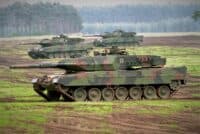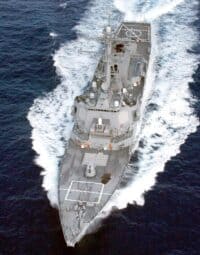

The United State’s naval fleet grew drastically during World War II. A reported 1,200 major combatant ships were added by war’s end. These ships include destroyers, aircraft carriers, amphibious assault vessels, and patrol boats. The swift production pace and rapid deployment played a crucial role. For example, The USS Essex was finished in just 20 months, underscoring the urgent need for carriers at that time. (Here is the fate of every US aircraft carrier during World War II.)
The Fletcher-class destroyer, introduced in 1942, constituted the majority of the U.S. Navy’s destroyer force in the Pacific Theater of WWII. Armed with five main guns, 10 torpedo tubes, and two anti-submarine weapon depth charge racks, this destroyer class produced a total of 175 ships, actively participating in numerous naval encounters in the Pacific Theater. (Also see, a battle with Japan during WWII was the largest in U.S. naval history.)
24/7 Wall St. reviewed warship production figures from Military Factory, an online repository of military equipment data to determine the most mass-produced American military ships used during the Second World War. We exclusively considered ship classes that served in WWII and had a minimum production of nine units during the class’s lifespan. The classes are ranked by their total production count, including those built before or after the war. Additional information regarding the type, notable ships, crew, and year of service also originated from Military Factory. Ships within the same class often exhibited distinct crew complements.
Why This Matters
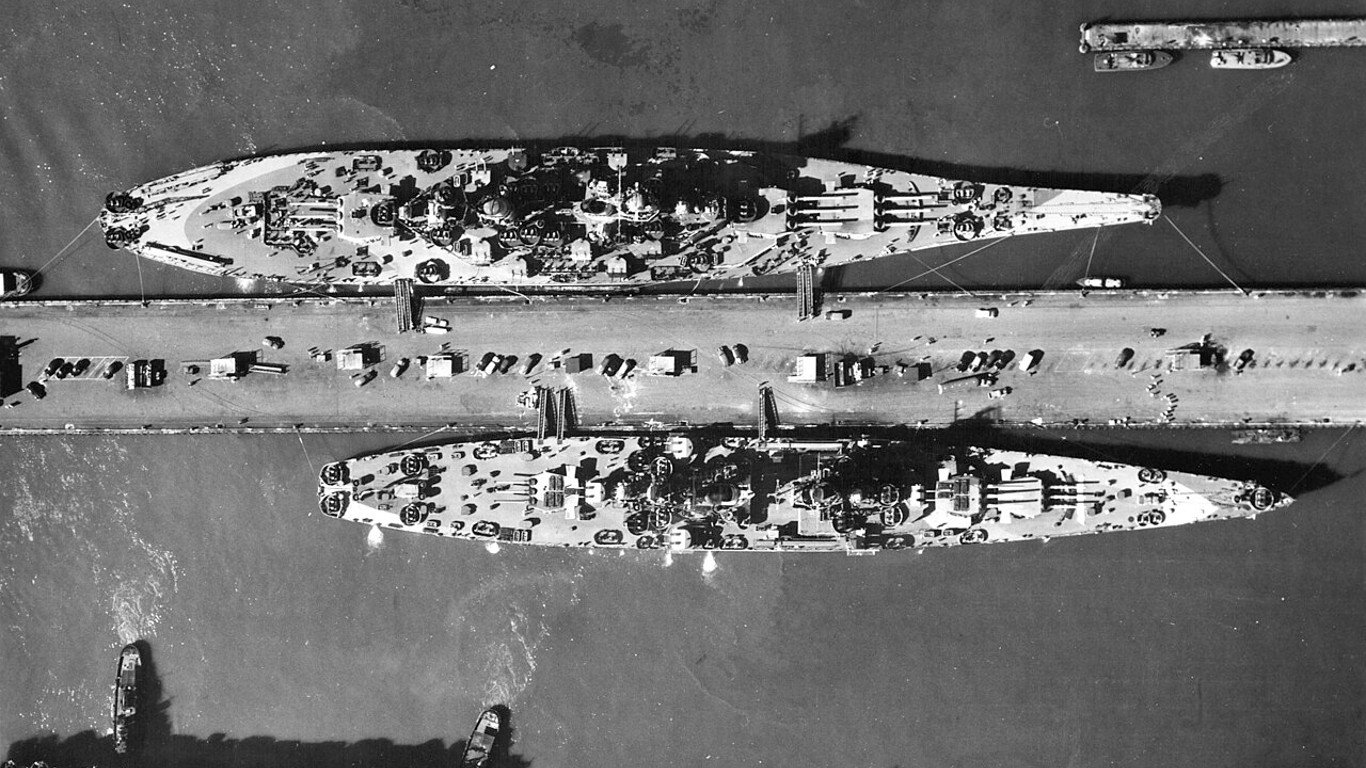
This story delves into United States Navy ships that were the most mass-produced during World War II. These ships represent a diverse array of functions and capabilities and serve as crucial elements in determining the outcomes of numerous engagements and the course of the war itself. We’re covering this story because World War II was a unique time for the American economy, in terms of both the war effort (bonds, material drives, rationing) as well as the mass production of weapons and vehicles by some of its biggest manufacturers, many of which are still around today. The biggest American shipbuilders at the time were Newport News Shipbuilding & Drydock, New York Shipbuilding Corporation, and the Bethlehem Shipbuilding Corporation. Newport News Shipbuilding & Drydock is currently owned by Huntington Ingalls Industries – one of the top current ship builders of the United States Navy.
Here are the most mass produced US navy ships in World War II: every ship, ranked:
29. Independence-class
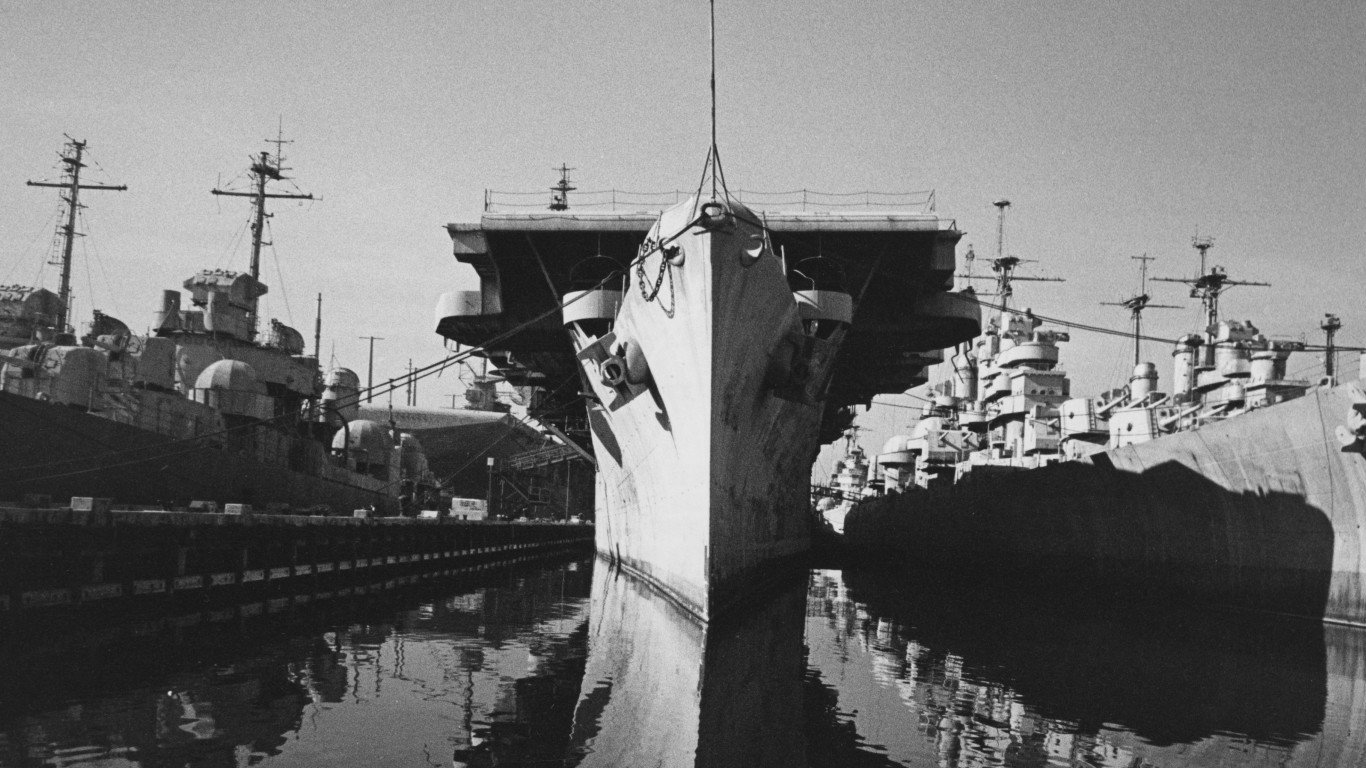
- Number produced: 9
- Type: Conventionally-powered light aircraft carrier
Notable ships within the Independence-class include the USS Independence (CVL-22), USS Cabot (CVL-28), and USS Cowpens (CVL-25). The USS Independence (CVL-22) entered service in 1943 and could fit a crew of 1,569.
28. Sims-class
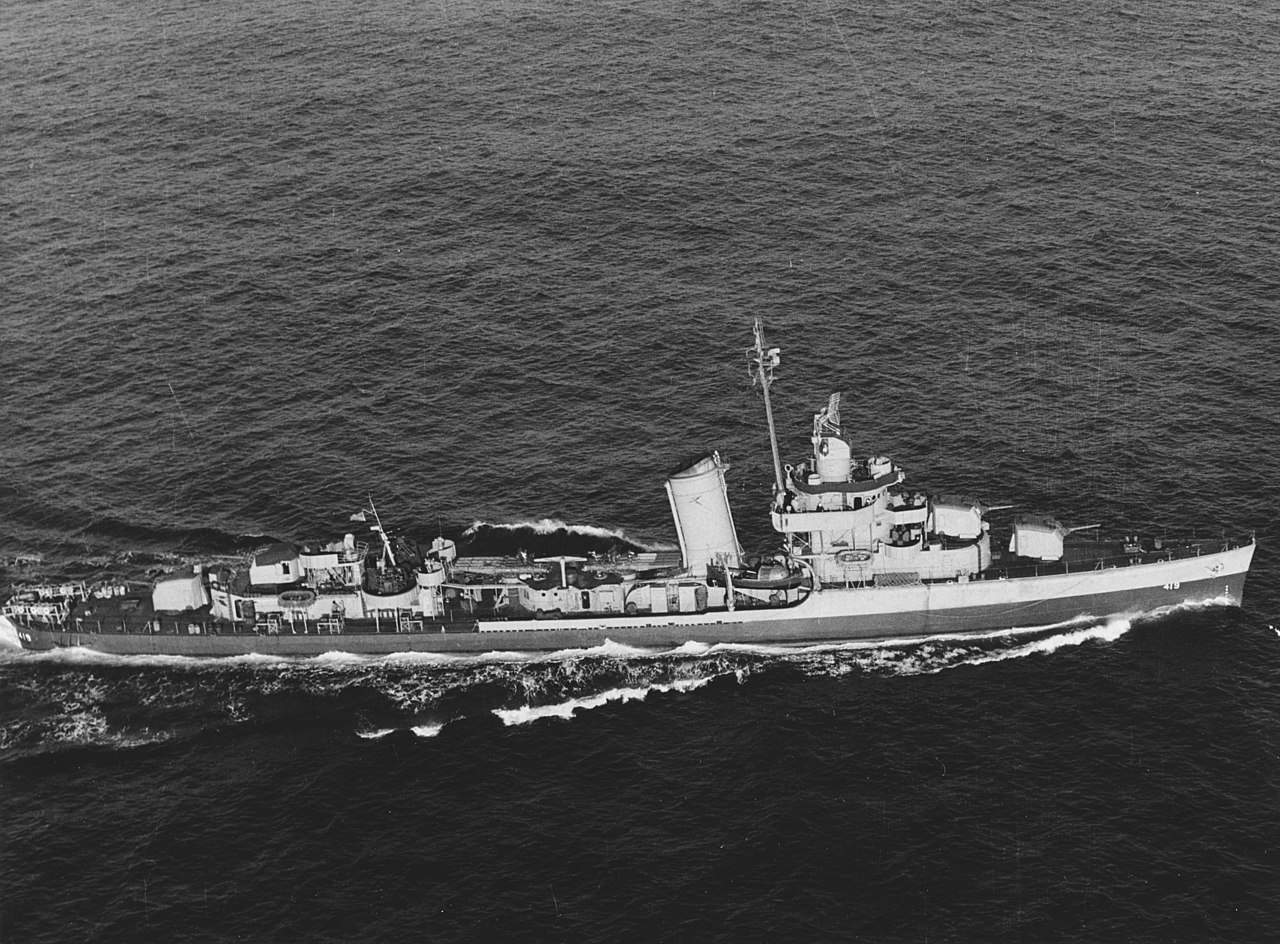
- Number produced: 12
- Type: Destroyer
A notable ship within the Sims-class was the USS Wainwright (DD-419). It entered service in 1940 and could fit a crew of 192.
27. Fargo-class

- Number produced: 13
- Type: Light cruiser
A notable ship within the Fargo-class was the USS Fargo (CL-106). It entered service in 1945 and could fit a crew of 1,255.
26. Baltimore-class
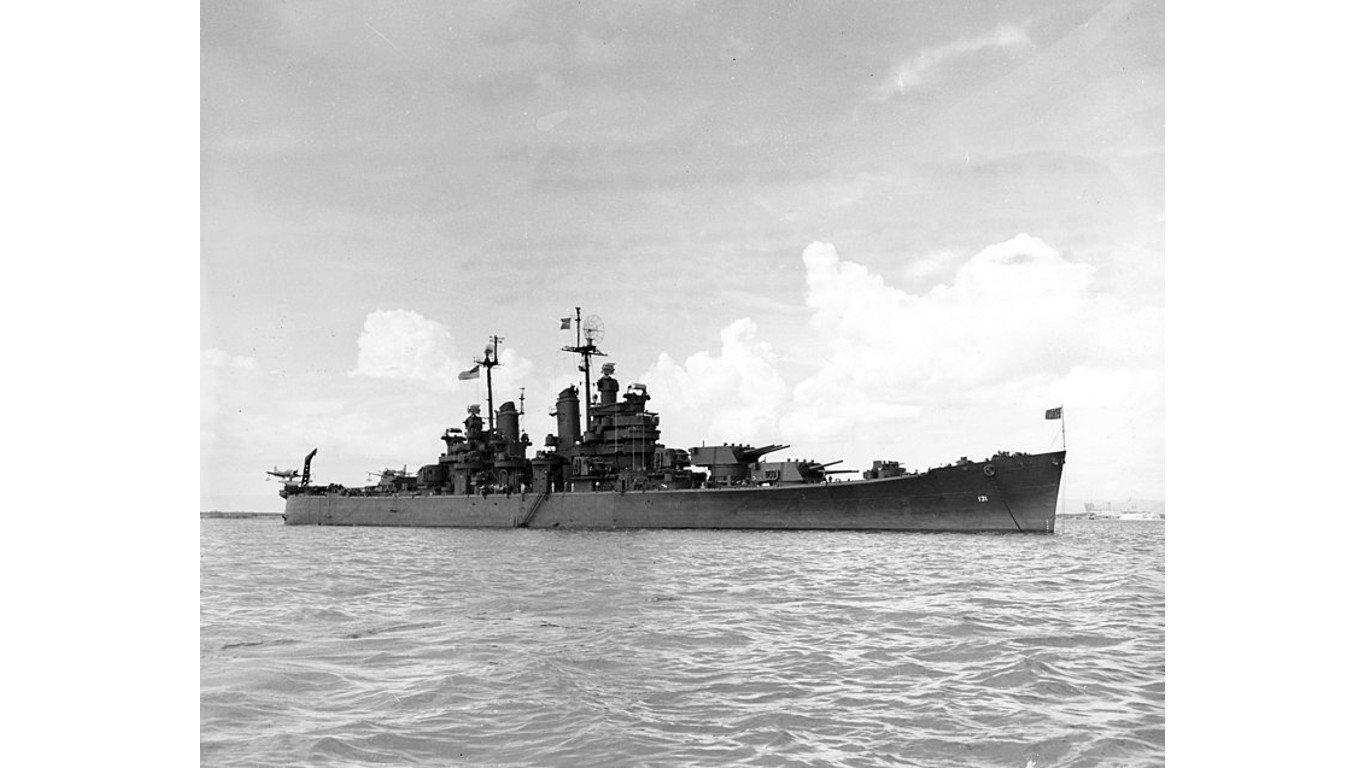
- Number produced: 14
- Type: Heavy cruiser
Notable ships within the Baltimore-class include the USS Fall River (CA-131) and USS Saint Paul (CA-73). The USS Fall River (CA-131) entered service in 1945 and could fit a crew of 1,142.
25. Mahan-class

- Number produced: 18
- Type: Multicole destroyer
A notable ship within the Mahan-class was the USS Downes (DD-375). It entered service in 1937 and could fit a crew of 158.
24. PT 95
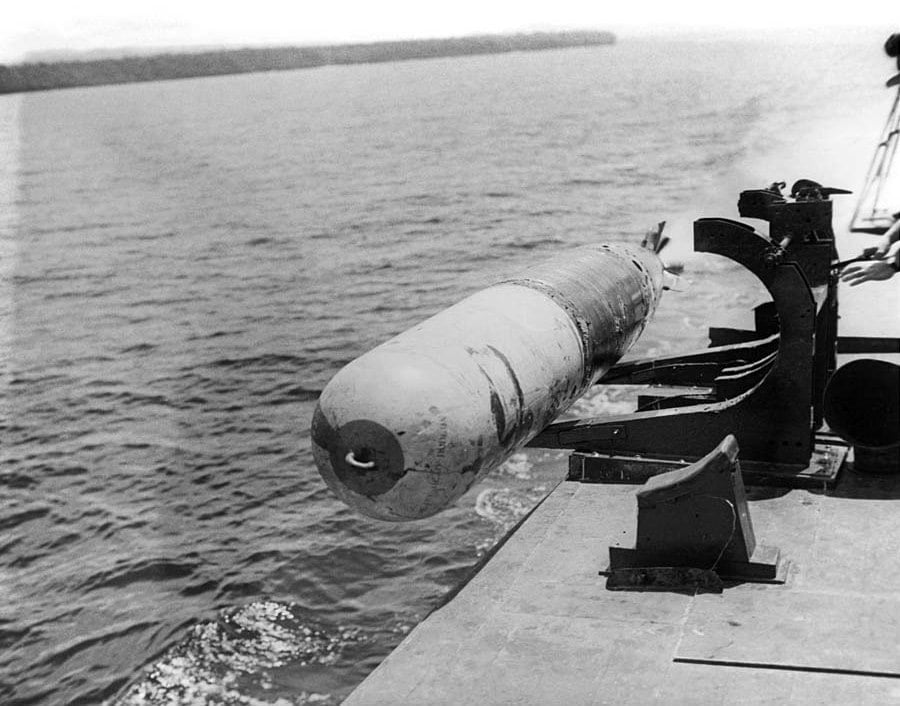
- Number produced: 18
- Type: Motorized torpedo fast boat
The Huckins PT Boat (Patrol Torpedo) was a notable boat within this class. It entered service in 1942 and could fit a crew of 11.
23. Rudderow-class
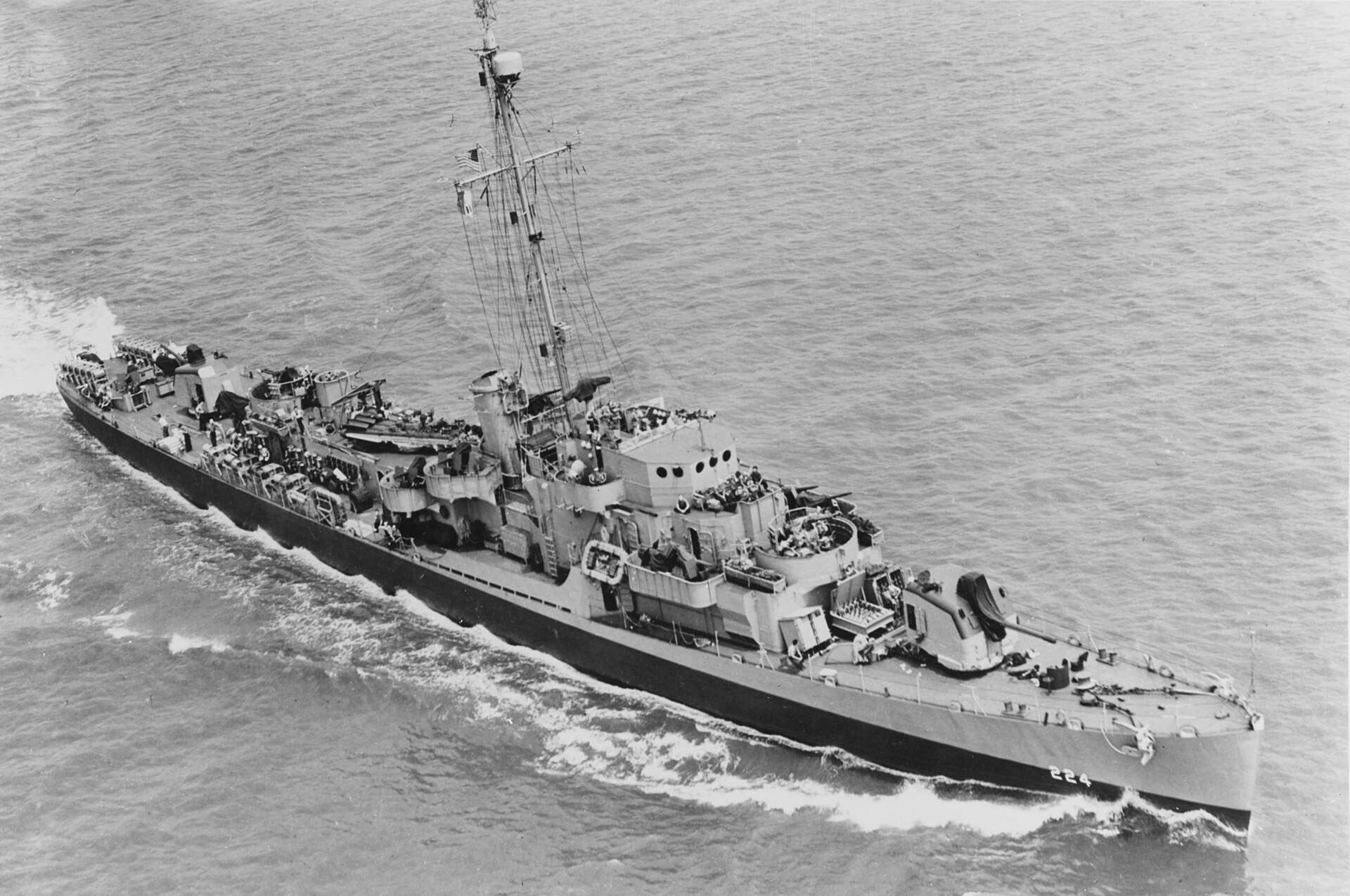
- Number produced: 22
- Type: Destroyer escort
A notable ship within the Rudderow-class was the USS Rudderow (DE-224). It entered service in 1944 and could fit a crew of 221.
22. Essex-class
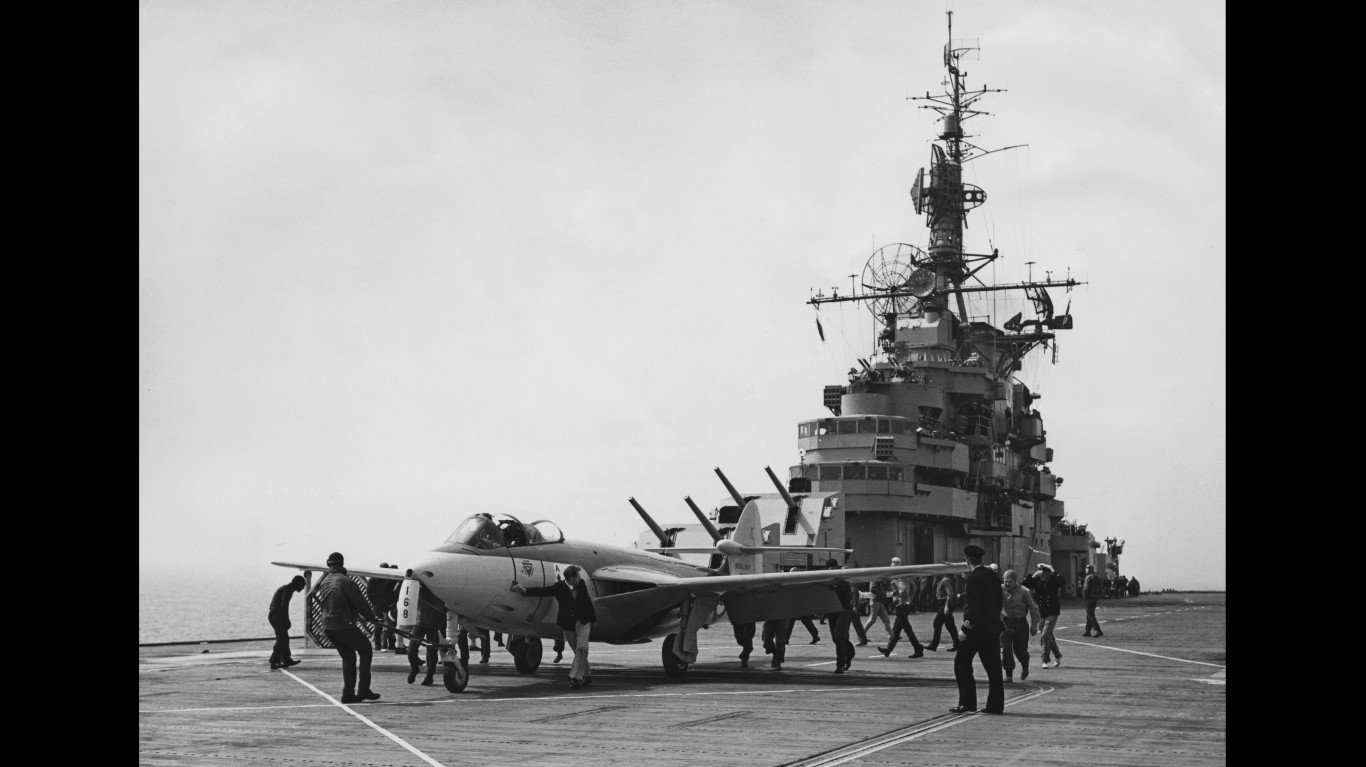
- Number produced: 24
- Type: Conventionally-powered aircraft carrier
Notable ships within the Essex-class include the USS Essex (CV-9), USS Hancock (CV-19), and USS Franklin (CV-13). The USS Essex (CV-9) entered service in 1942 and could fit a crew of 2,600.
21. Cleveland-class
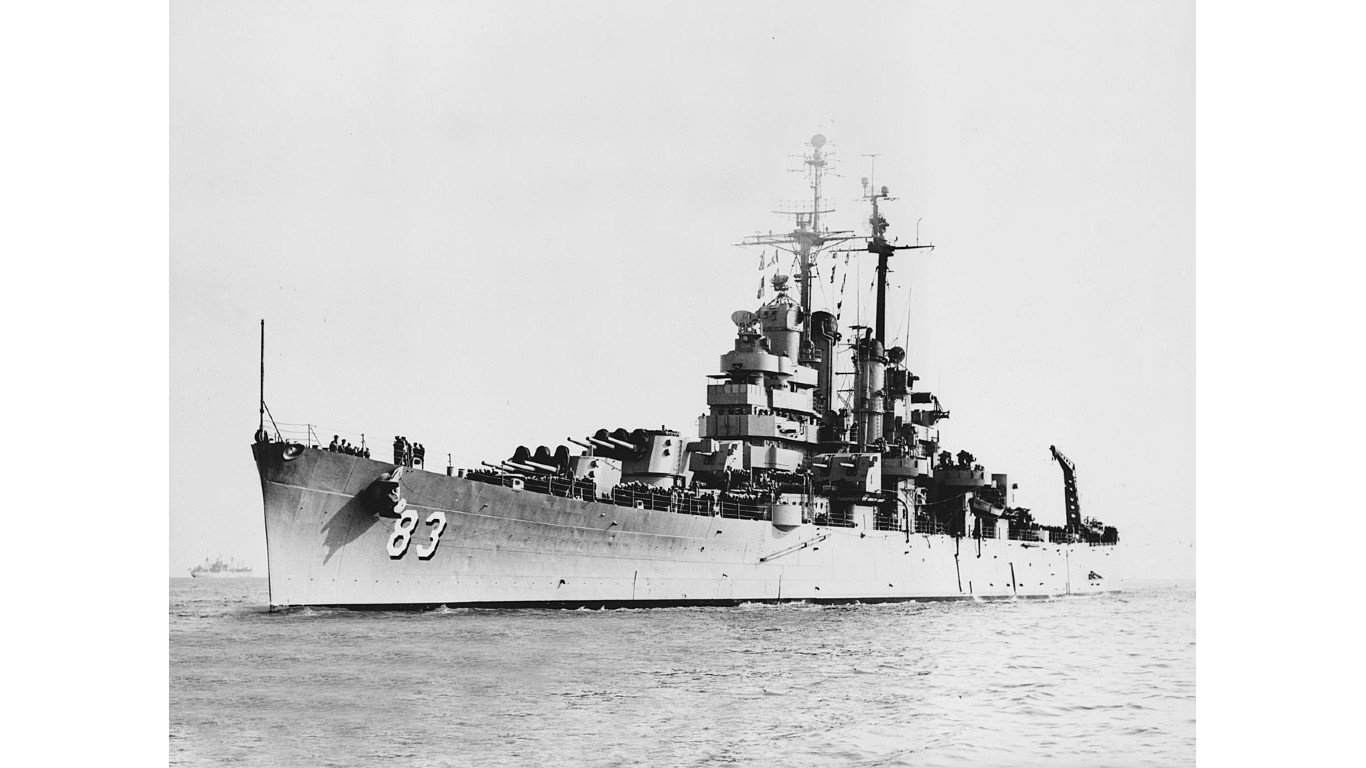
- Number produced: 29
- Type: Light cruiser
Notable ships within the Cleveland-class include the USS Cleveland (CL-55), USS Oklahoma City (CL-91), and USS Wilkes-Barre (CL-103). The USS Cleveland (CL-55) entered service in 1942 and could fit a crew of 1,255.
20. Benson-class

- Number produced: 30
- Type: Destroyer
A notable ship within the Benson-class was the USS Laffey (DD-459). It entered service in 1942 and could fit a crew of 208.
19. Tolland-class

- Number produced: 33
- Type: Attack cargo ship
A notable ship within the Tolland-class was the USS Alamance (AKA-75). It entered service in 1944 and could fit a crew of 395.
18. Bogue-class
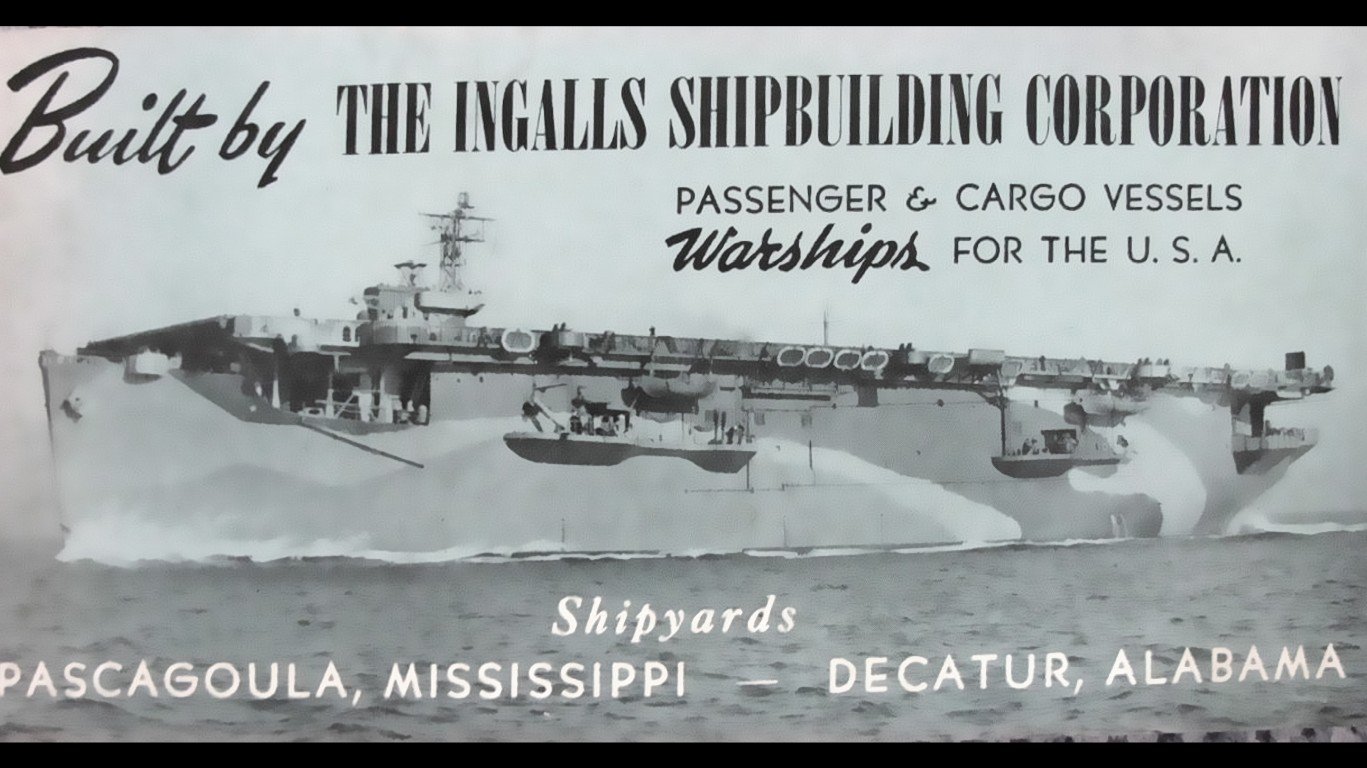
- Number produced: 45
- Type: Escort carrier/aircraft carrier
A notable ship within the Bogue-class was the USS Bogue (CVE-9). It entered service in 1942 and could fit a crew of 890.
17. Lapwing-class
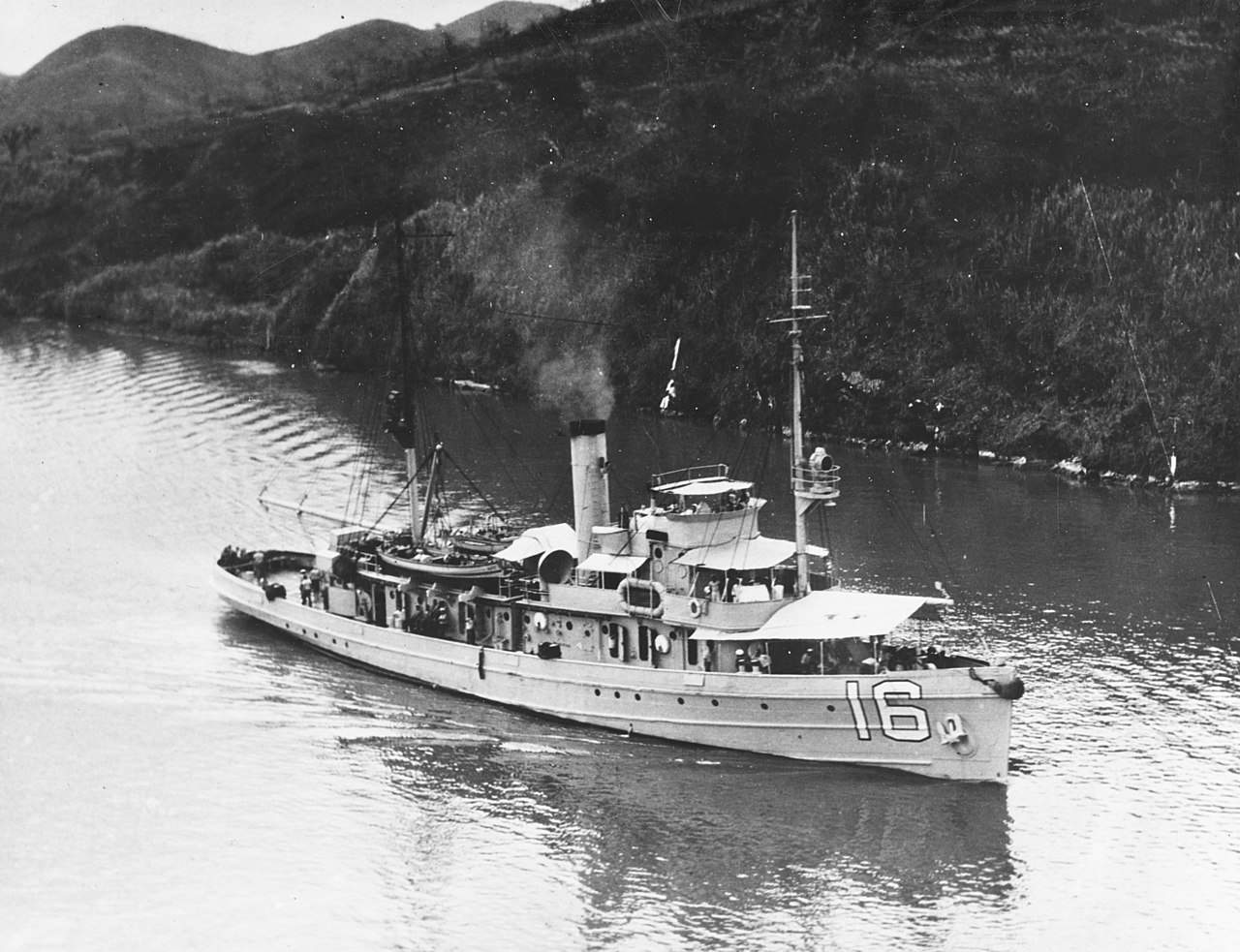
- Number produced: 49
- Type: Minesweeper
A notable ship within the Lapwing-class was the USS Lapwing (AM-1). It entered service in 1918 and could fit a crew of 78.
16. Casablanca-class
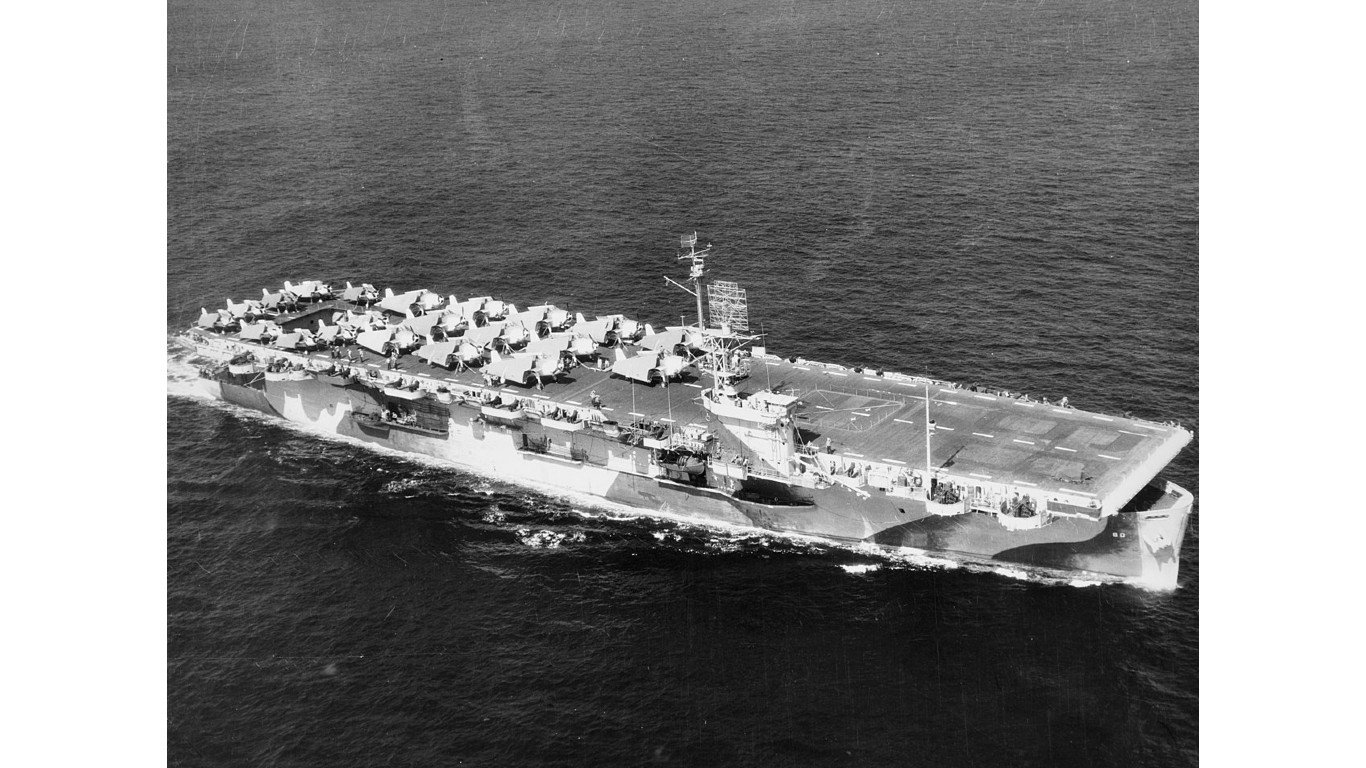
- Number produced: 50
- Type: Escort carrier
Notable ships within the Casablanca-class include the USS Kalinin Bay (CVE-68), USS Liscome Bay (CVE-56), and USS Shamrock Bay (CVE-84). The USS Kalinin Bay (CVE-68) entered service in 1943 and could fit a crew of 860.
15. Allen M. Sumner-class
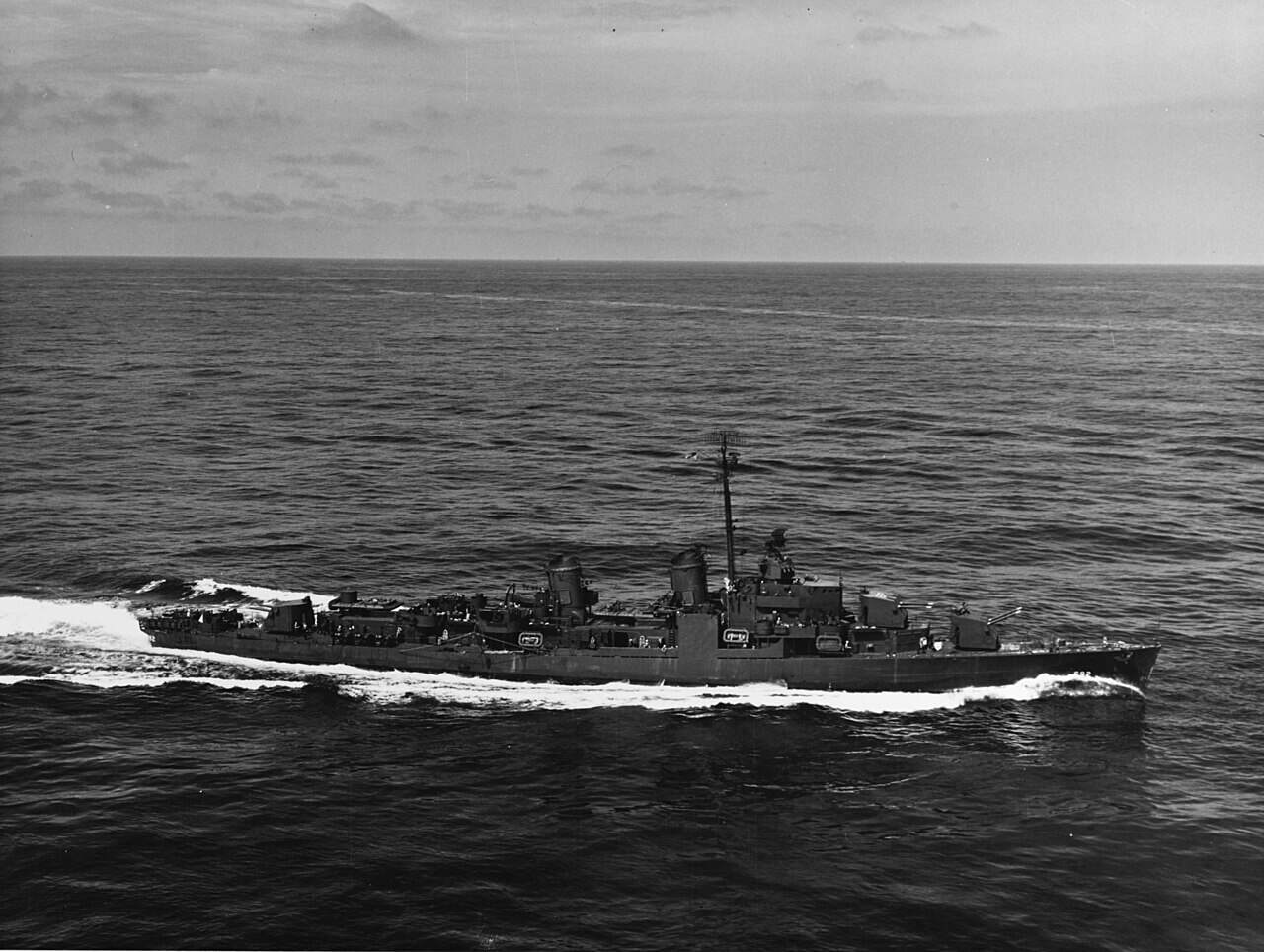
- Number produced: 58
- Type: Destroyer
Notable ships within the Allen M. Sumner-class include the USS Allen M. Sumner (DD-692), USS Laffey (DD-724), and USS Hugh W. Hadley (DD-774). The USS Allen M. Sumner (DD-692) entered service in 1944 and could fit a crew of 336.
14. Crater-class freighter
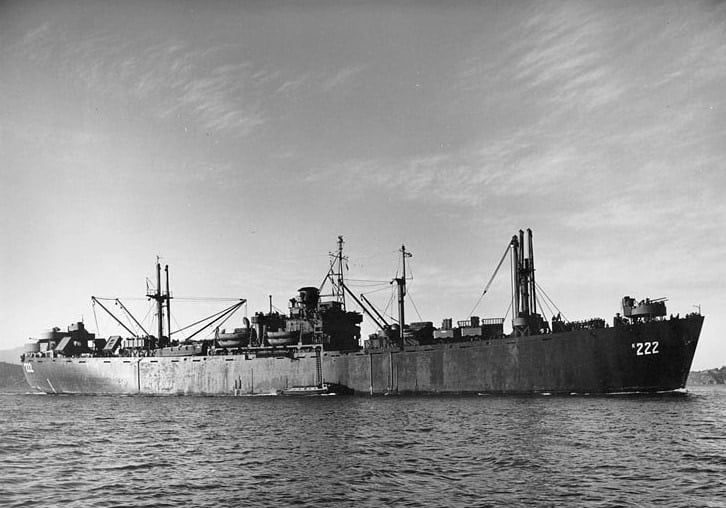
- Number produced: 62
- Type: Cargo ship
A notable ship within the Crater-class freighter was the USS Serpens (AK-97). It entered service in 1943 and could fit a crew of 206.
13. Gleaves-class
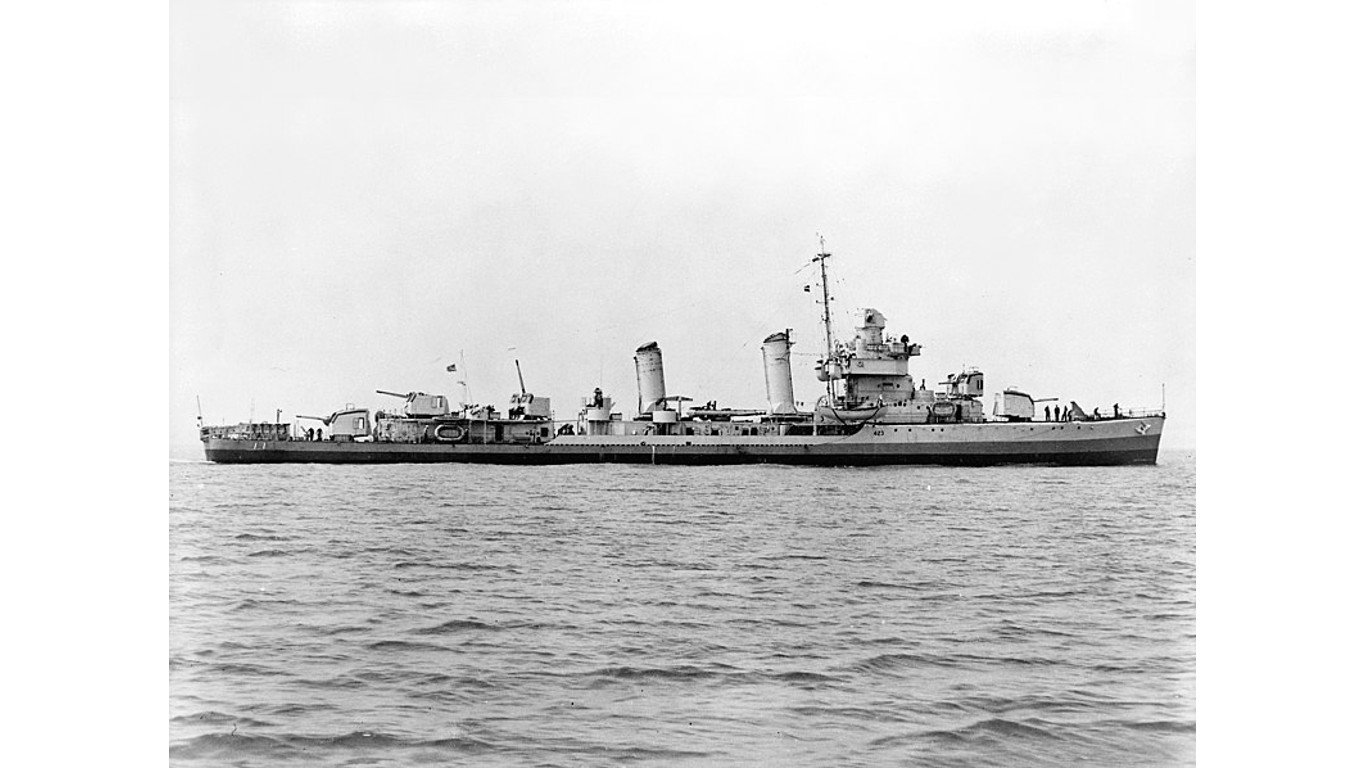
- Number produced: 66
- Type: Destroyer
Notable ships within the Gleaves-class include the USS Gleaves (DD-423) and USS McCalla (DD-488). The USS Gleaves (DD-423) entered service in 1940 and could fit a crew of 276.
12. John C. Butler-class
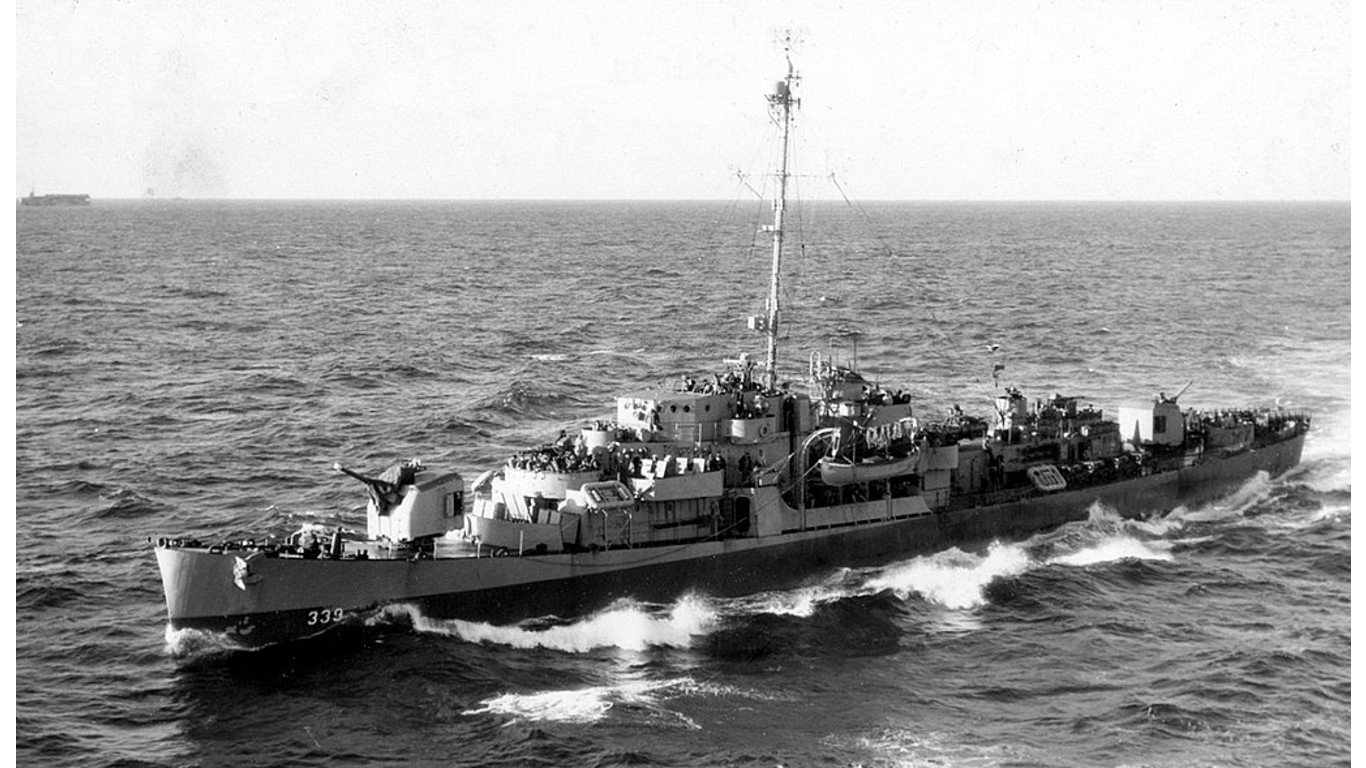
- Number produced: 83
- Type: Destroyer escort
Notable ships within the John C. Butler-class include the USS John C. Butler (DE-339) and USS Samuel B. Roberts (DE-413). The USS John C. Butler (DE-339) entered service in 1944 and could fit a crew of 186.
11. Edsall-class
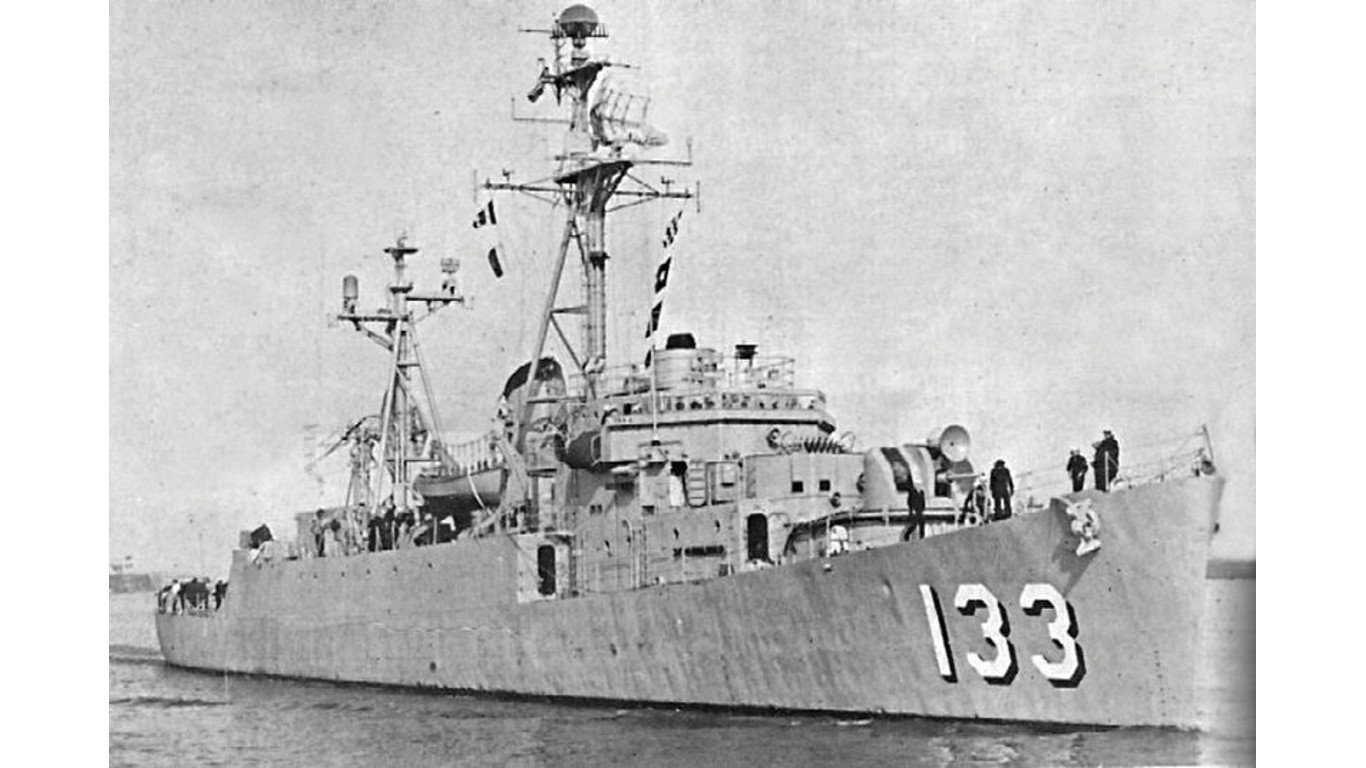
- Number produced: 85
- Type: Destroyer escort
A notable ship within the Edsall-class was the USS Pillsbury (DE-133). It entered service in 1943 and could fit a crew of 209.
10. Gearing-class
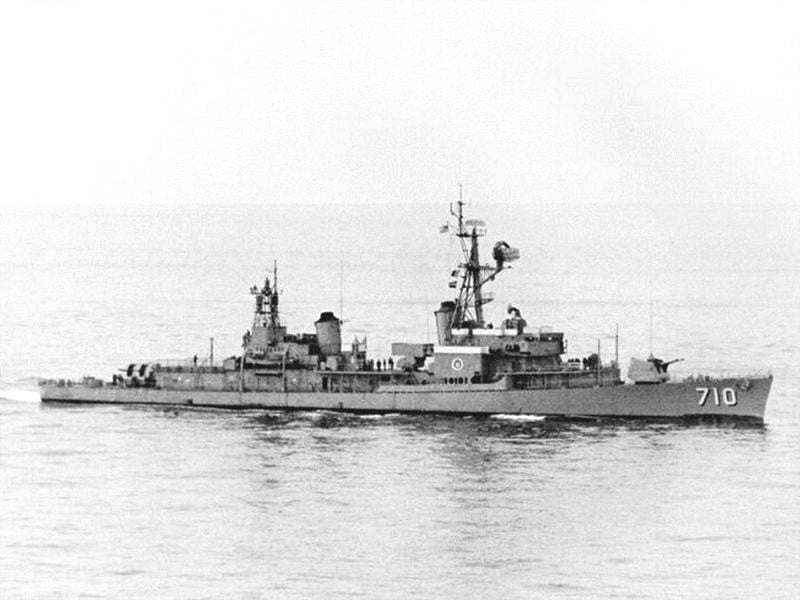
- Number produced: 98
- Type: Destroyer/submarine hunter
Notable ships within the Gearing-class include the USS Gearing (DD-710) and USS Floyd B. Parks (DD-884). The USS Gearing (DD-710) entered service in 1945 and could fit a crew of 336.
9. Admirable-class
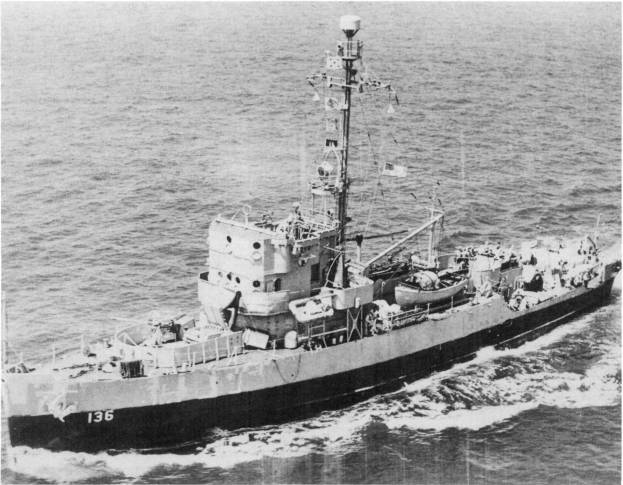
- Number produced: 123
- Type: Minesweeper / anti-submarine warfare vessel
A notable ship within the Admirable-class was the USS Improve (AM-247). It entered service in 1944 and could fit a crew of 104.
8. Clemson-class
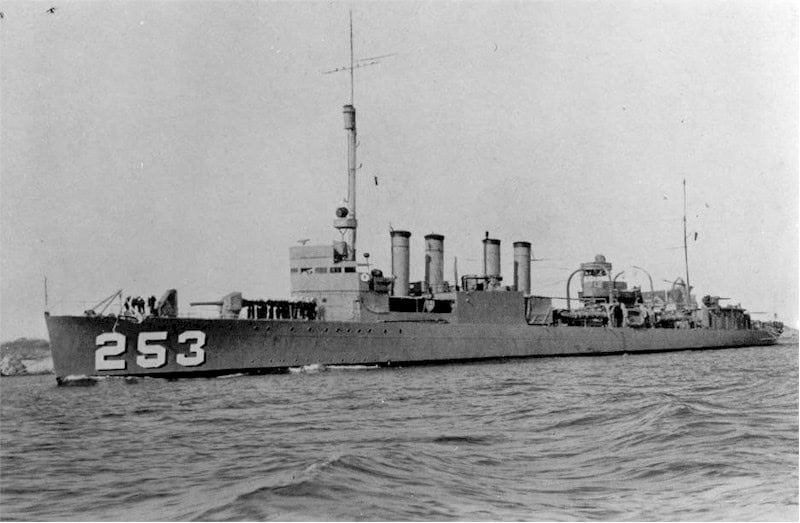
- Number produced: 156
- Type: Destroyer
Notable ships within the Clemson-class include the USS John D. Ford (DD-228), USS McCalla (DD-253), and USS Reuben James (DD-245). The USS John D. Ford (DD-228) entered service in 1920 and could fit a crew of 122.
7. Fletcher-class
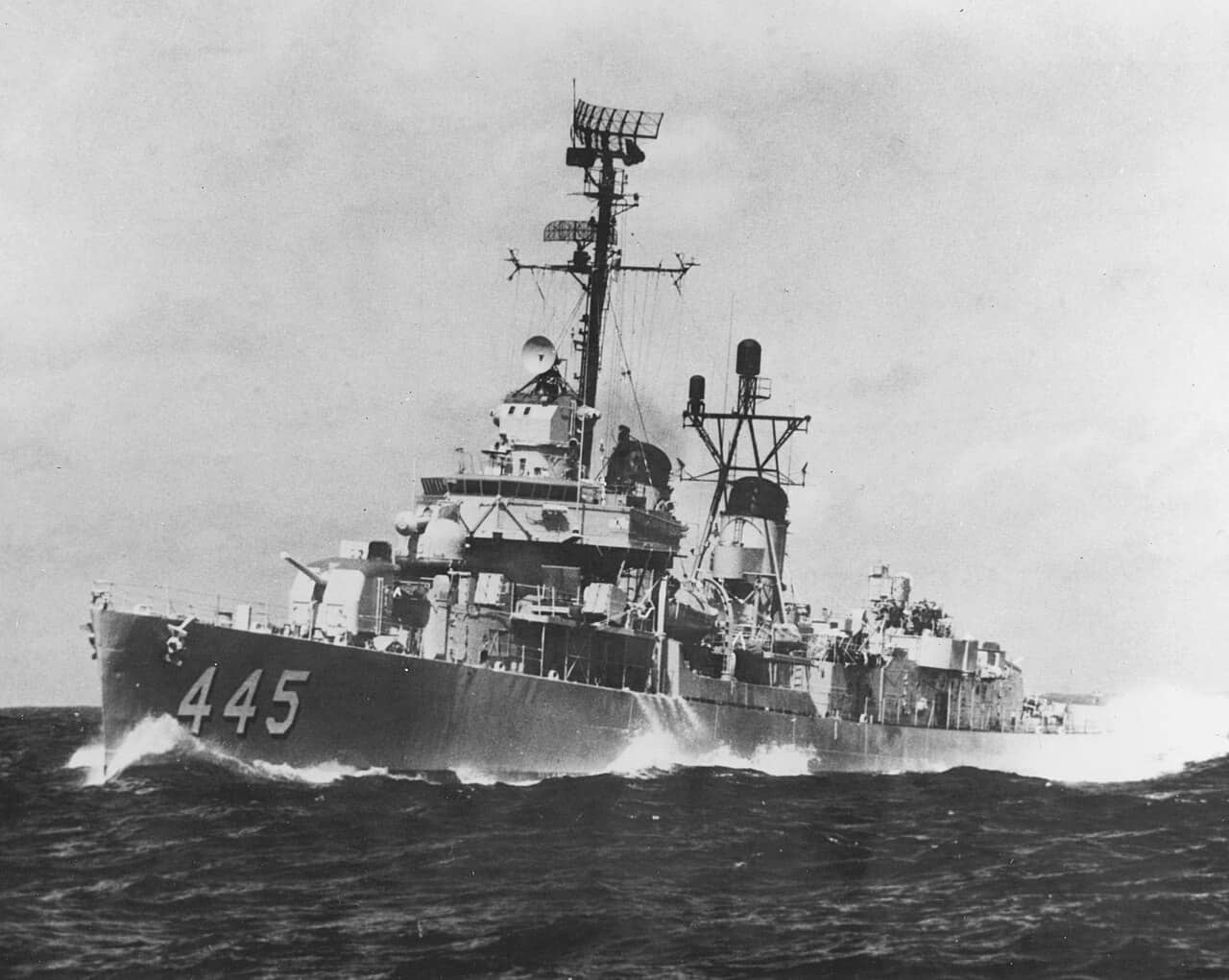
- Number produced: 175
- Type: Destroyer / anti-submarine warfare platform
Notable ships within the Fletcher-class include the USS Fletcher (DD-445), USS Stoddard (DD-566), and USS The Sullivans (DD-537). The USS Fletcher (DD-445) entered service in 1942 and could fit a crew of 273.
6. Higgins PT Boat
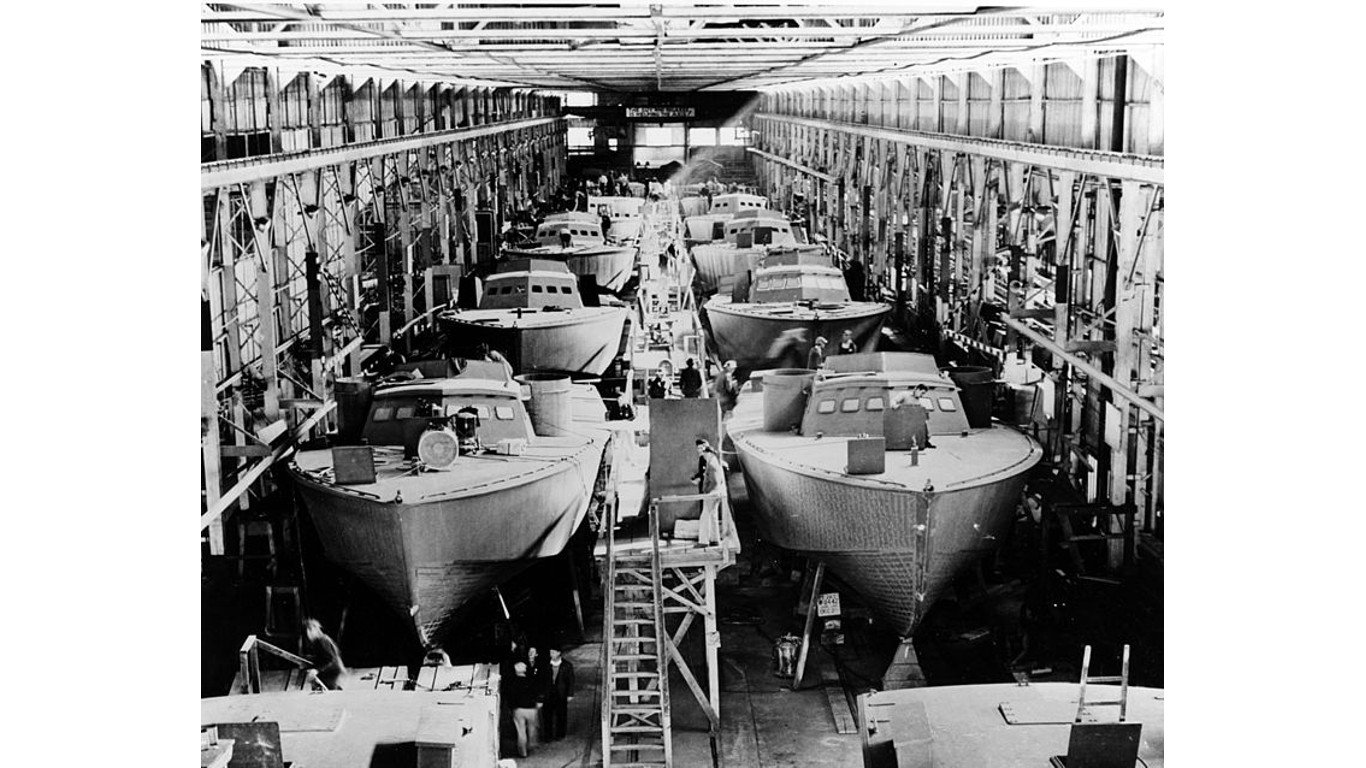
- Number produced: 199
- Type: Patrol boat/motor torpedo boat
The Higgins PT Boat entered service in 1942 and could fit a crew of 11.
5. PT 103-class
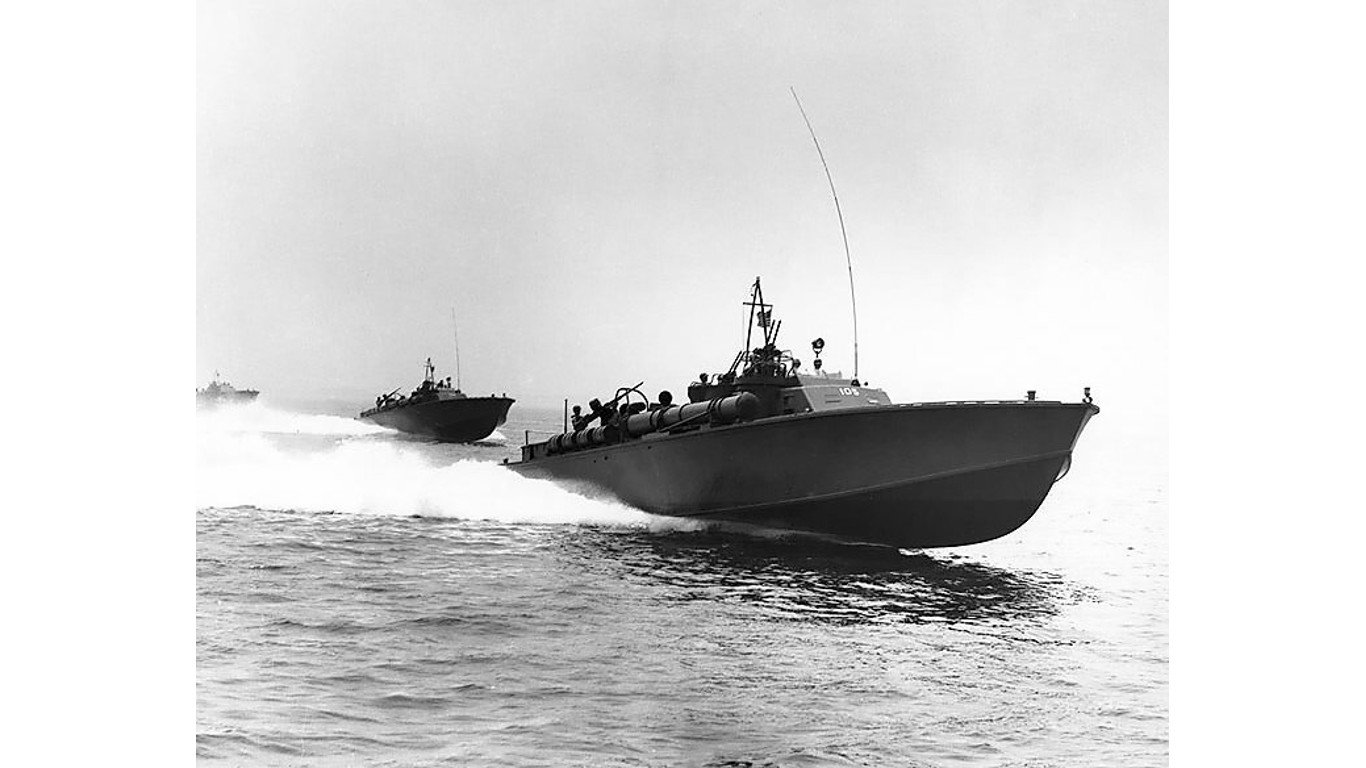
- Number produced: 326
- Type: Patrol boat/motor torpedo boat
The PT 103-class entered service in 1941 and could fit a crew of 14.
4. Landing Craft Infantry (Large)
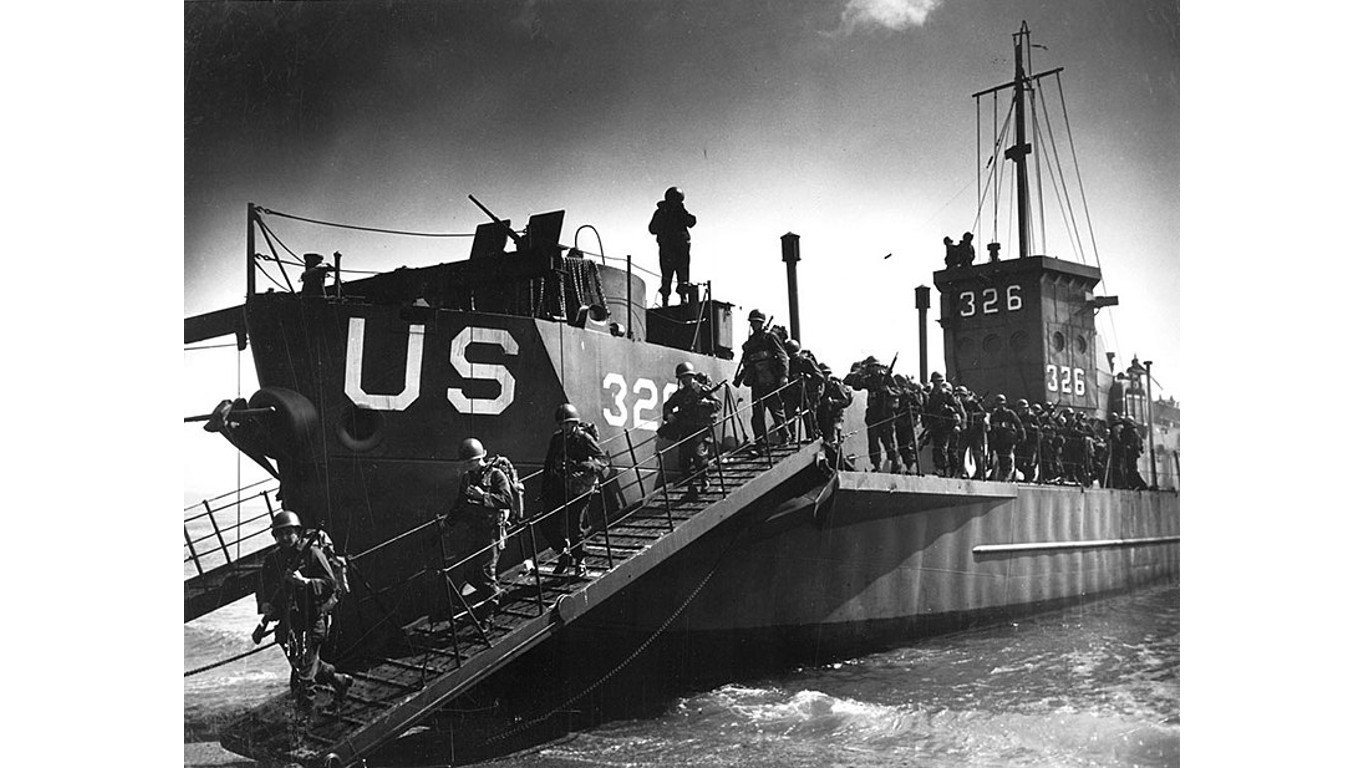
- Number produced: 923
- Type: Amphibious assault ship
Large Landing Craft Infantry entered service in 1943 and could fit as many as 24 personnel on board.
3. Landing Ship, Tank MkII (LST2)
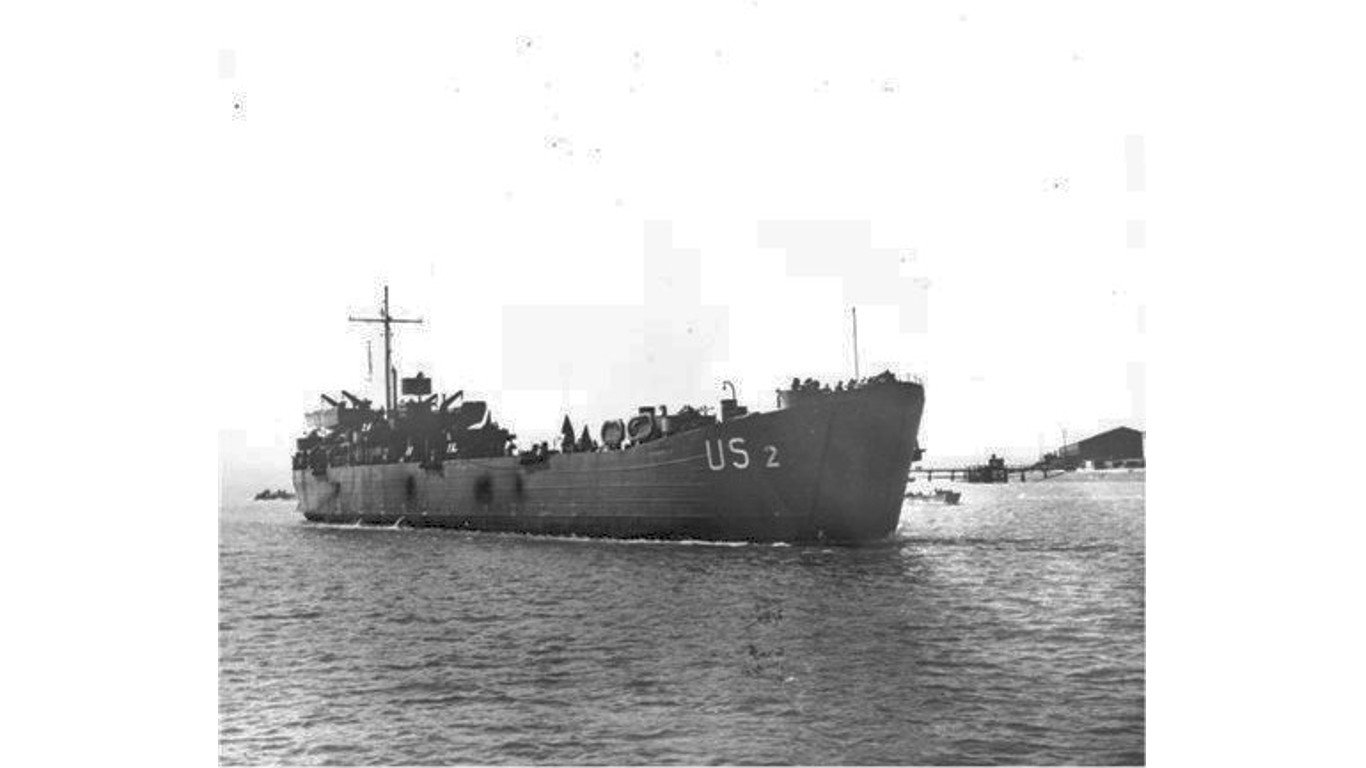
- Number produced: 1,051
- Type: Amphibious assault transport vessel
Tank MkII (LST2) Landing Ships entered service in 1942 and could fit as many as 265 personnel on board.
2. EC2-S-C1-class (Liberty Ship)
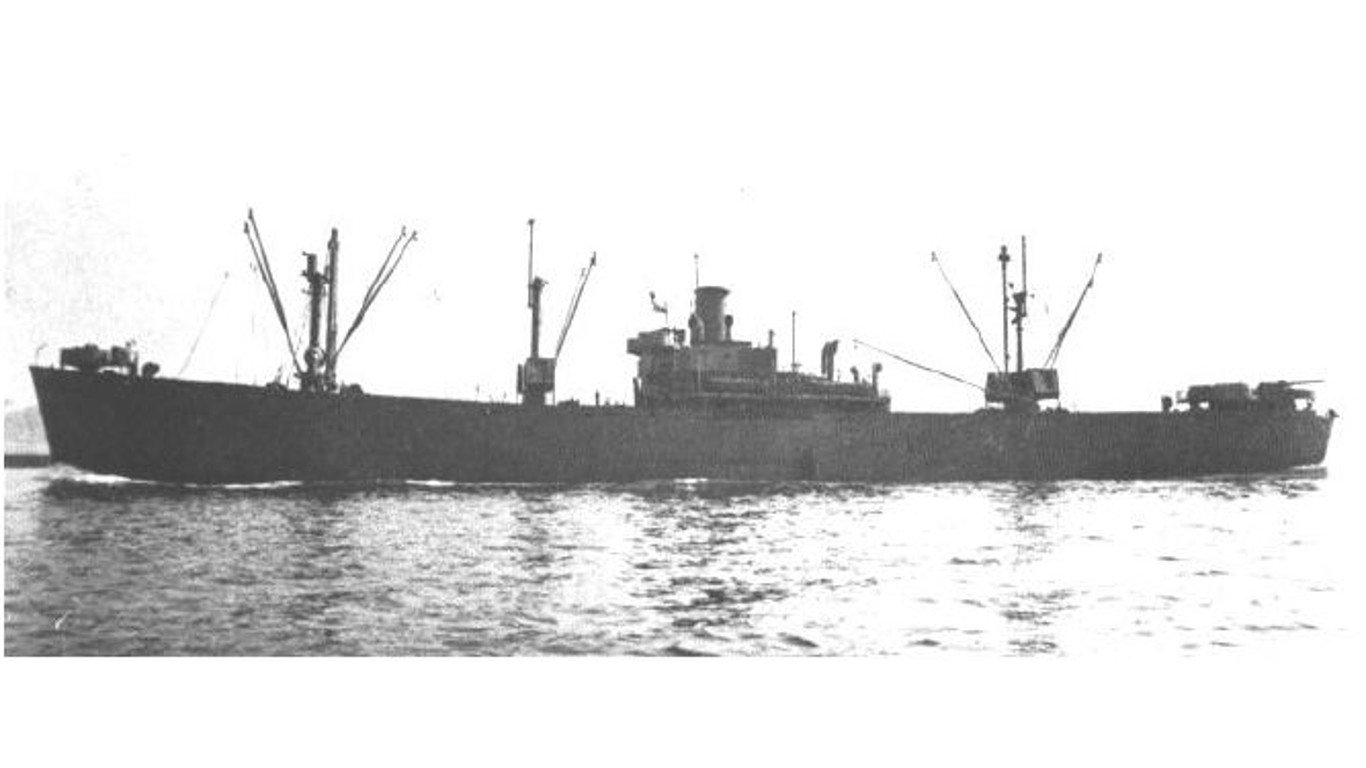
- Number produced: 2,751
- Type: Cargo ship vessel
A notable ship within the EC2-S-C1-class (Liberty Ship) was the SS John Brown B4611. It entered service in 1942 and could fit a crew of 87.
1. Higgins Boat LCVP (Landing Craft, Vehicle, Personnel)
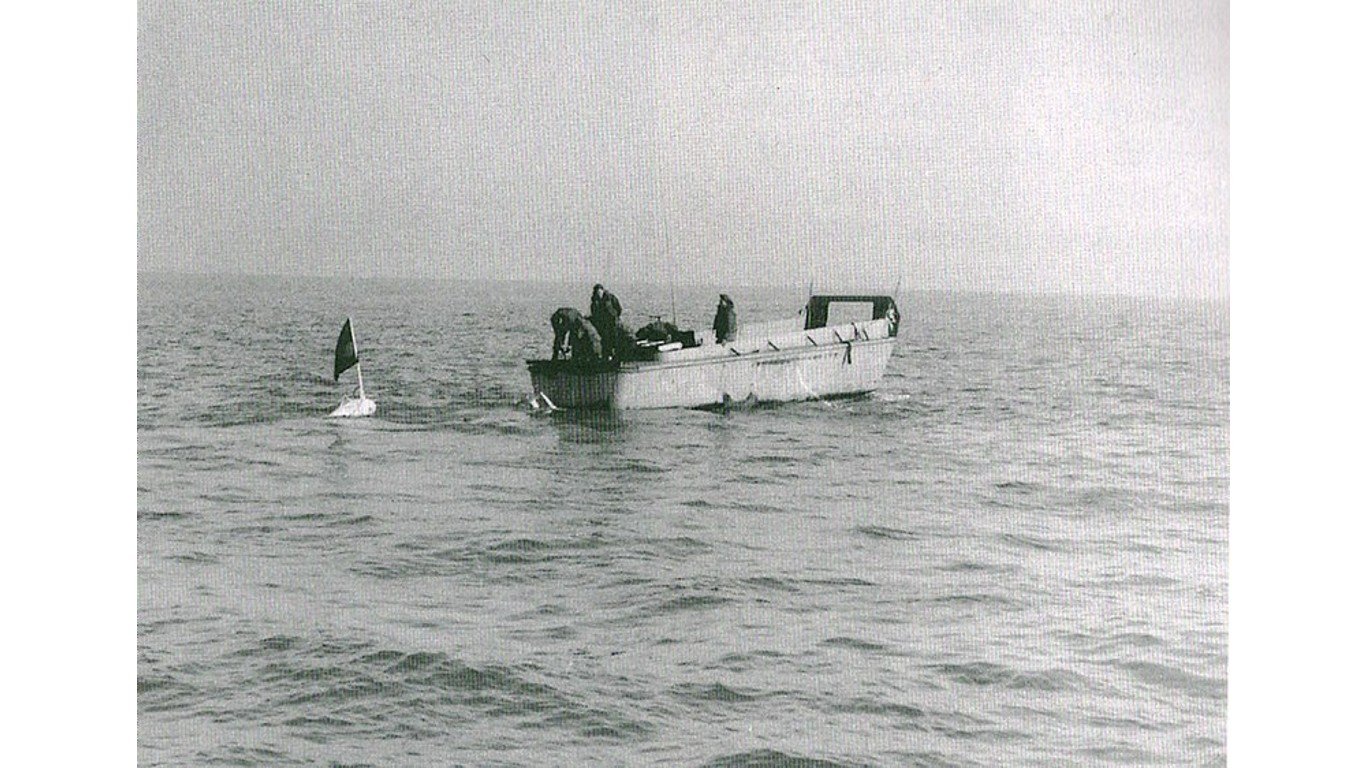
- Number produced: 20,000
- Type: Amphibious assault landing craft
- Notable ship(s): N/A
- Year entered service: 1941
- Personnel: 39
The Higgins Boat LCVP Landing Craft entered service in 1941 and could fit as many as 39 on board.
ALERT: Take This Retirement Quiz Now (Sponsored)
Take the quiz below to get matched with a financial advisor today.
Each advisor has been vetted by SmartAsset and is held to a fiduciary standard to act in your best interests.
Here’s how it works:
1. Answer SmartAsset advisor match quiz
2. Review your pre-screened matches at your leisure. Check out the advisors’ profiles.
3. Speak with advisors at no cost to you. Have an introductory call on the phone or introduction in person and choose whom to work with in the future
Take the retirement quiz right here.
Thank you for reading! Have some feedback for us?
Contact the 24/7 Wall St. editorial team.

